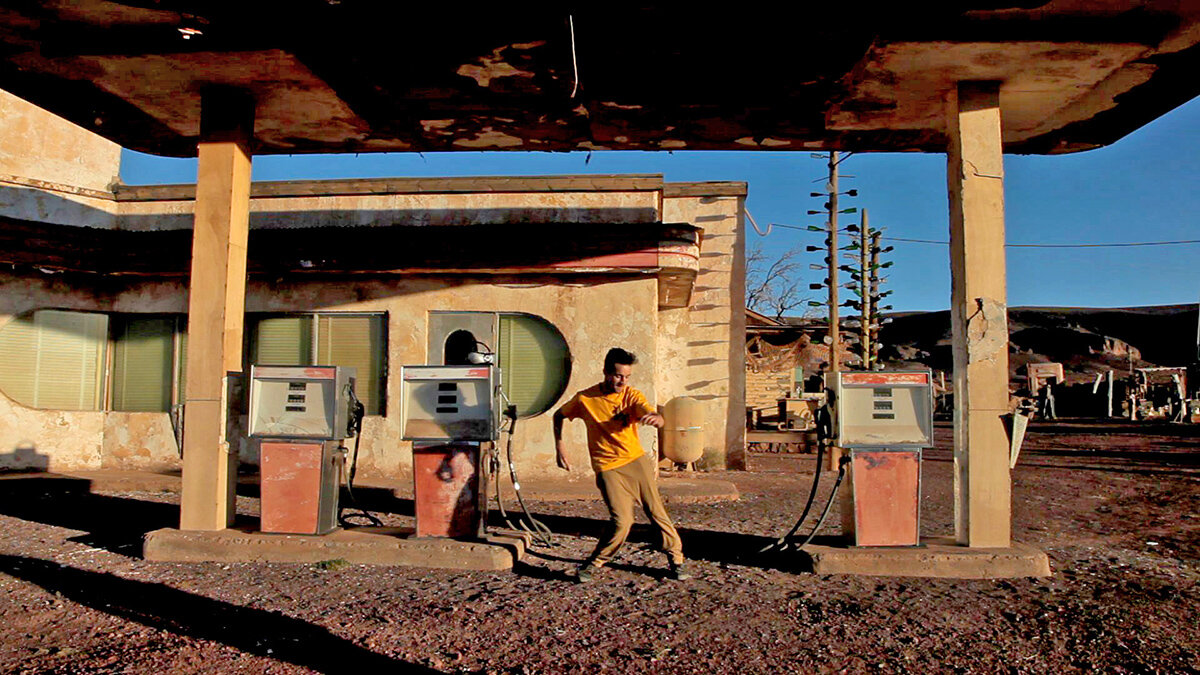
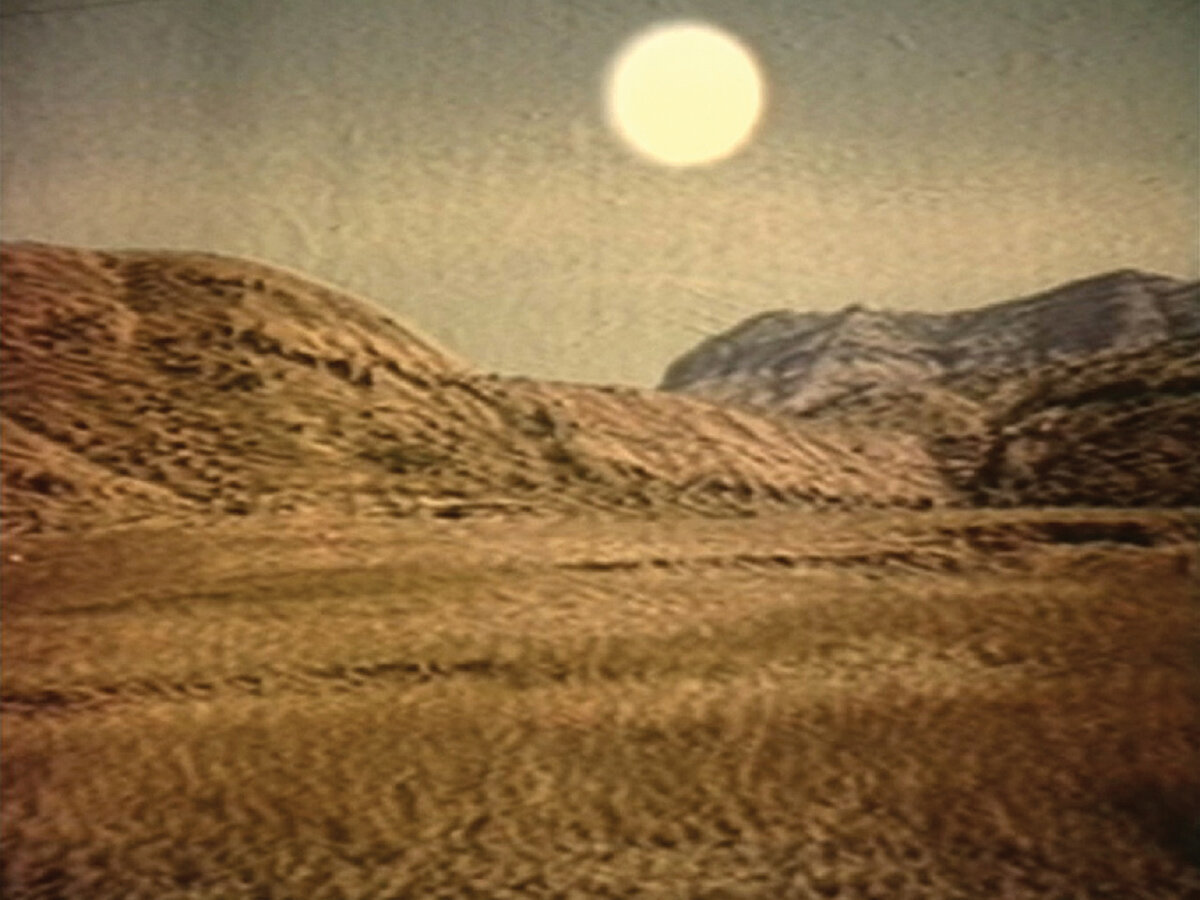
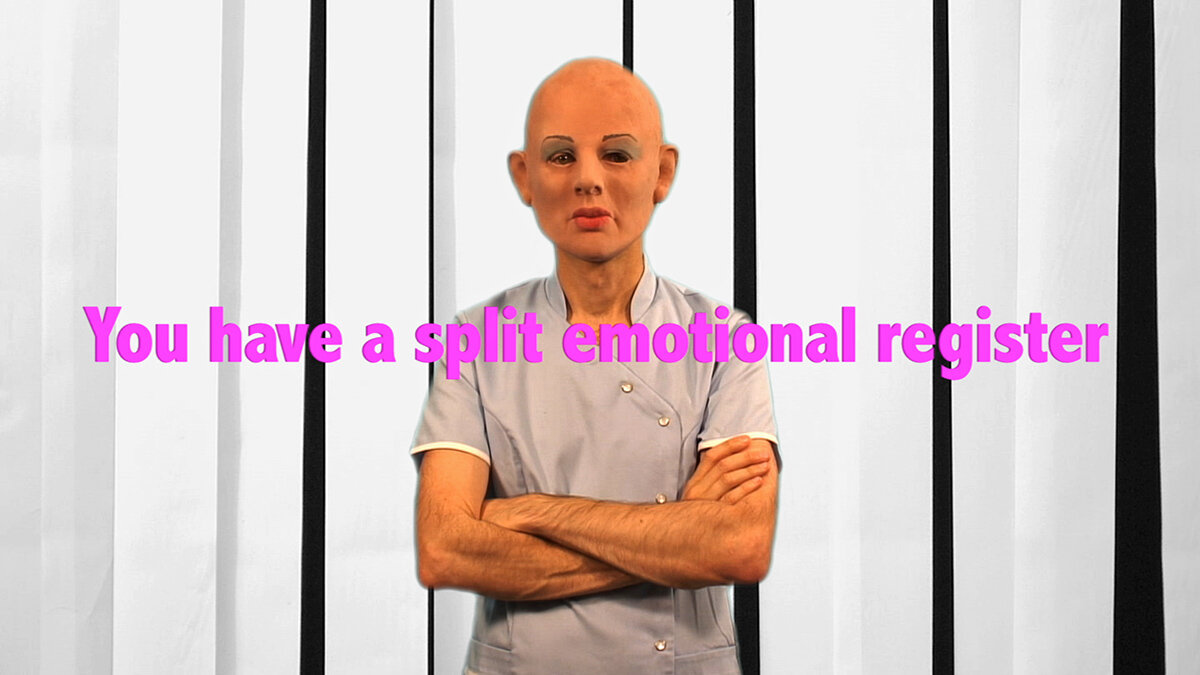
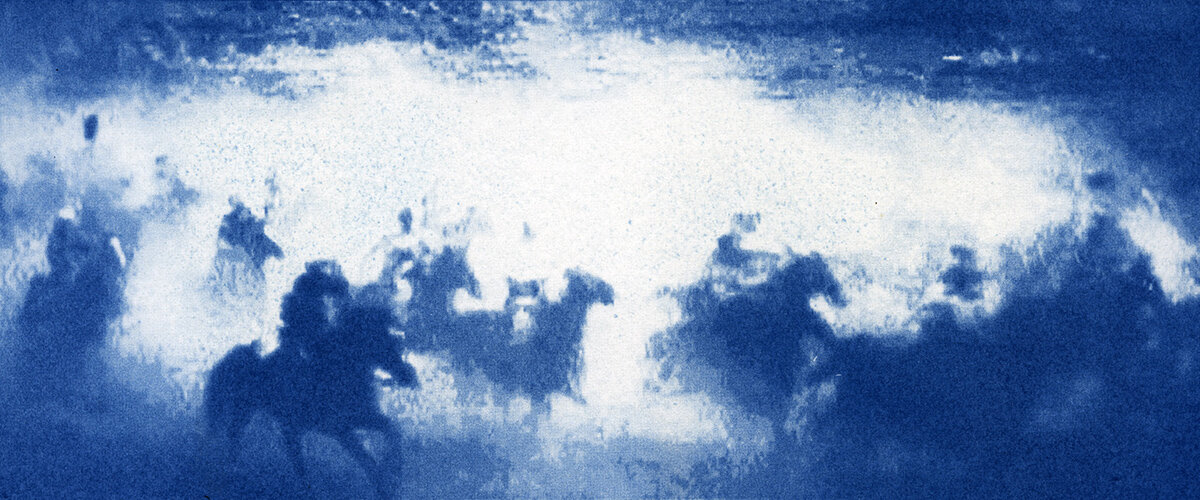
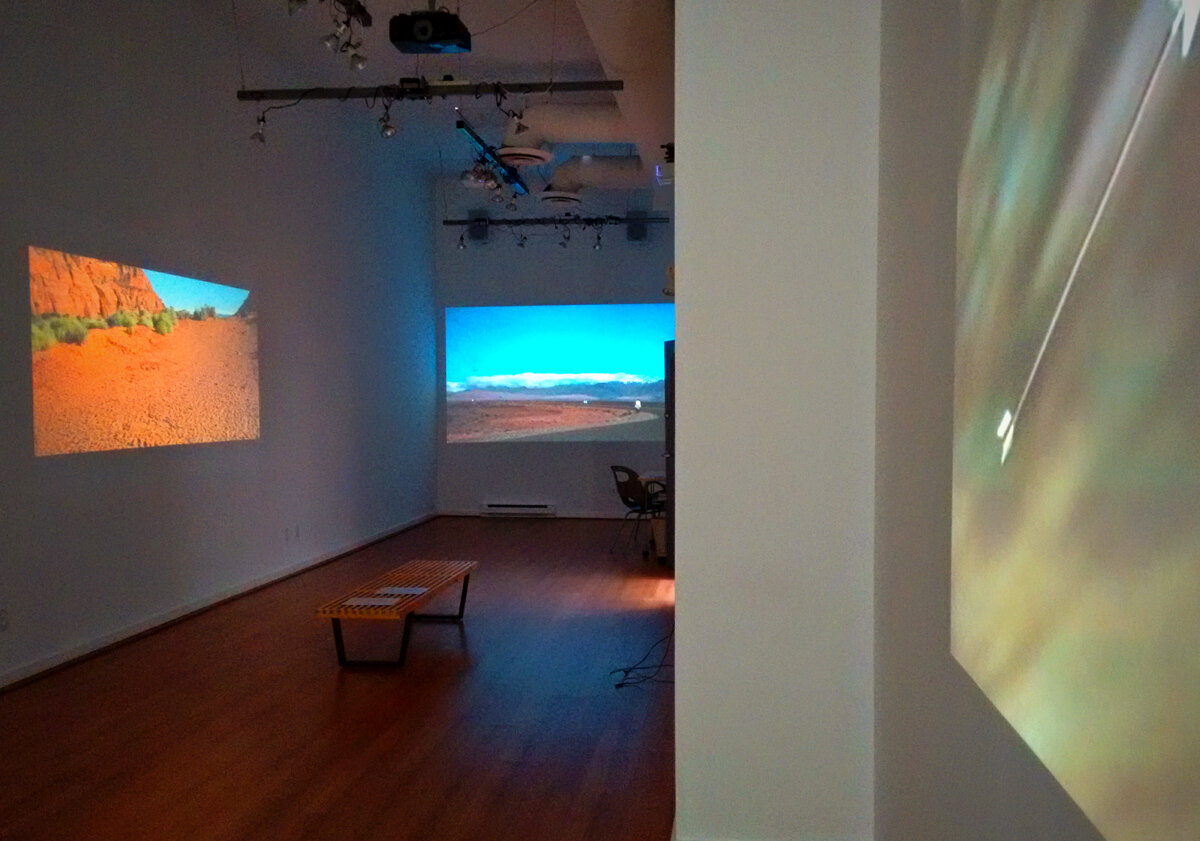
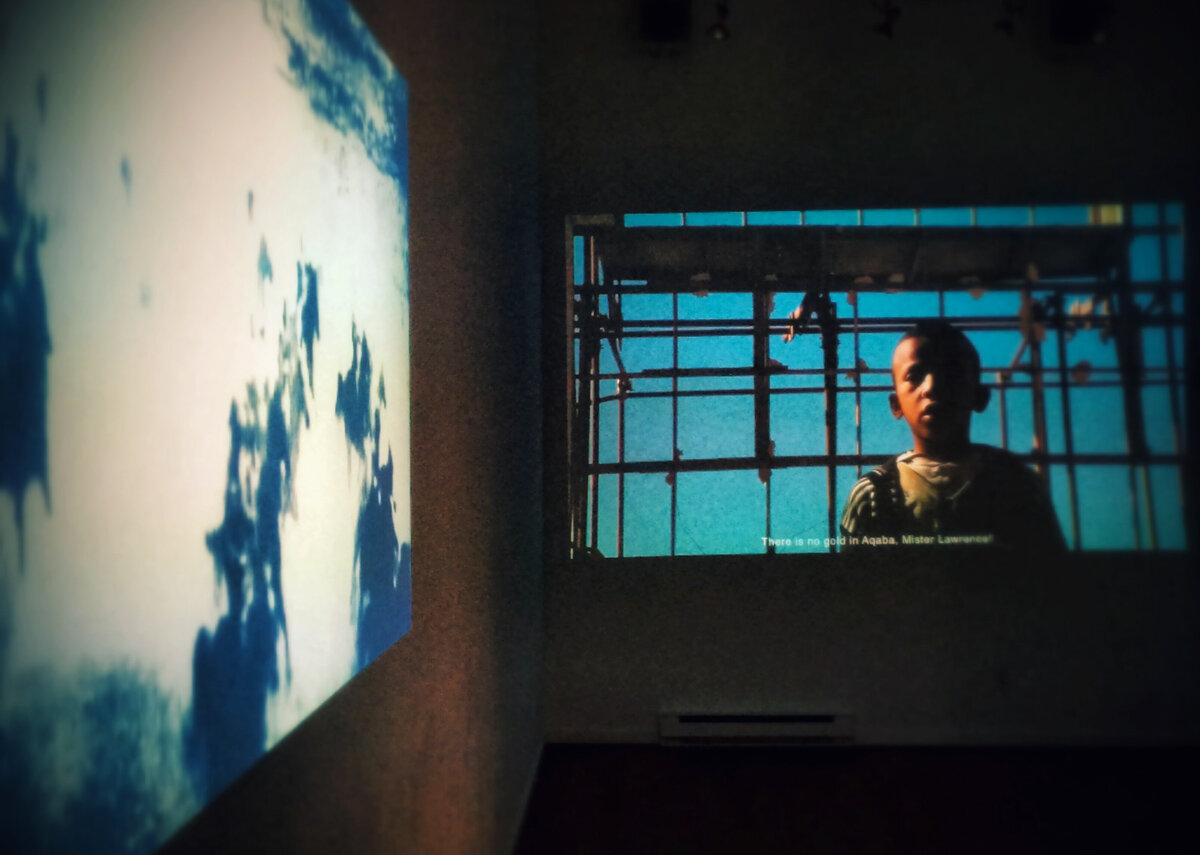
Speculative Frictions
Rä di Martino
Shambhavi Kaul
Jennet Thomas
Hope Tucker
June 3 to 27, 2015
Speculative Frictions is a media installation exploring constructed cinematic landscapes, narratives restructured though repurposed footage/sound and tropes of speculative fiction and surrealism. It comprises the works Petite histoire des plateaux abandonnés (di Martino), Handful of Dust (Tucker), 21 Chitrakoot (Kaul) and The Advice Shape (Thomas).
In this exhibition, facts and fictions are gloriously recombined or rehabilitated through the use of found or existing footage, sound and reenactments. A slipperiness of time and space propels existing and familiar narrative structures through the membrane that separates truth from fabrication. The resulting cognitive dissonance transcends conflicts between natural and invented landscapes, past and future, the real and anomalous: the bleed-through of artificial and constructed worlds onto the connatural is exalted.
In the Drâa Valley vestiges of Hollywood in the form of crumbling stage sets wait to be reclaimed by the Moroccan desert—foregrounding the notional power of mirage and what exactly constitutes an oasis (and for whom) in a trenchant critique of the dividends of colonialism and cultural capital. During shooting of The Conquerer in Utah, horses hooves churned up lethal sand storms—a befouled legacy of more than 119 above-ground nuclear tests—resulting in the slow but inexorable poisoning of “downwinders,” largely Shivwits extras from the Paiute nation. The Prussian blue produced in cyanotypes printed from frames of the 1954 film is also used to treat radiation sickness; a literal and symbolic recuperation of the image memory. A popular television series from India is unmoored from its referents, uninhabited and then reanimated—transporting us from the aesthetics of destruction to the construction of aesthetics with the velocity and intensity of a shooting star. In some surreal present or future on some simulacrum of a soundstage The Nurse exhorts us to take a yes or no quiz while we are fleetingly exposed to alarming and disjointed images. “Did the man harm them,” (s)he enquires? “Do you feel comfortable in a disciplined environment?” In the spaces between the interrogatories and the daft fleetness of photographic “evidence” we internalize the nature of artifice and adapt it to our experience as voyeurs. Congratulations are in order. “You have a split emotional register. Would you like to reseal it?”
Rä di Martino is a graduate of Chelsea College of Art and of the Slade School of Art. Born in Rome, she moved to London in 1997 and to New York in 2005. Selected recent solo exhibitions include: Rä di Martino, Museion, Bolzano (2014), Rä di Martino, MAXX Project, Sierre (2014), Marilyn, Galleria Il Capricorno, Venice (2014), Rä di Martino – Greater Torino, Fondazione Sandretto, Turin (2012); La controfigura – The Stand-In, Monitor Gallery, Rome (2011); Rä di Martino (Artscape at) Vartaj Gallery (2010); Rä di Martino,Artissima, Turin (2010); The Night Walker and Other Works, CAV, Coimbra (2009); Rä di Martino, Espaces Doll – Les Urbaines Festival, Lausanne (2008). Selected group shows include: Concrete, MUMA, Melbourne, Australia (2014), Worlds In Collision, Samstaag Museum, Adelaide (2014), Ruins in Reverse, Tate Modern, London & MALI, Lima (2013); Mardin Biennale, Mardin, Turkey (2013); Mission Afterviews, Victoria Theatre, San Francisco (2012).
Shambhavi Kaul’s cinematic constructions conjure uncanny, science-fictive non-places. Described as creating “zones of compression and dispersion,” her work utilizes strategies of montage and recirculation, inviting an affective response while simultaneously measuring our capacity to know what we encounter. She has exhibited her work worldwide at venues such as Toronto International Film Festival, Berlinale, New York Film Festival, London Film Festival, International Film Festival Rotterdam, Edinburgh International Film Festival, Internationale Kurzfilmtage Oberhausen, Ann Arbor Film Festival, the 2014 Shanghai Biennale and recently, her first solo show with Jhaveri Contemporary in Mumbai. Kaul was born in Jodhpur, India and currently lives in India and the United States.
Jennet Thomas makes films, performances and installations exploring the connections between everyday life, fantasy and ideology; experimenting with collective constructions of meaning. Using a collision of genres, her work can look like post-internet collage, fantasy TV drama, experimental film or performance art behaviour, and is frequently comic, uncanny and subversive. Thomas is interested in belief systems, ideas of truth, power and pleasure, and how cultural memories are re-made and distorted according to the needs of each era. The convergence of neoliberal ideology with new technology, and how that influences our construction of reality is an increasingly important theme. Thomas emerged from the anarchistic, experimental culture of London’s underground film and live art club scene in the 1990s, where she was a cofounder of the Exploding Cinema Collective. Her single screen work has screened extensively in film festivals internationally and recently at the Tate Britain. Recent exhibitions include All Suffering SOON TO END! (2010) and School of Change (2012) at Matt’s Gallery in London. Her first book of experimental fiction, The Unspeakable Freedom Device, will be published by Bookworks in July of this year.
Hope Tucker transforms what we know as a daily form of terse, text-driven, populist narrative through The Obituary Project, a compendium of lens-based works that give new life to the antiquated documentary practice of salvage ethnography. She has animated cyanotypes of downwinders and instructions for making fishing nets by hand; photographed shuttered bread factories, fallen witness trees and decaying civil rights era landmarks; recorded mobile phone footage of the last public phone booths of Finland, written the text of a video out of paper clips (a Norwegian symbol of solidarity and nonviolent resistance) and retraced the path of protest that closed the only nuclear power plant in Austria.